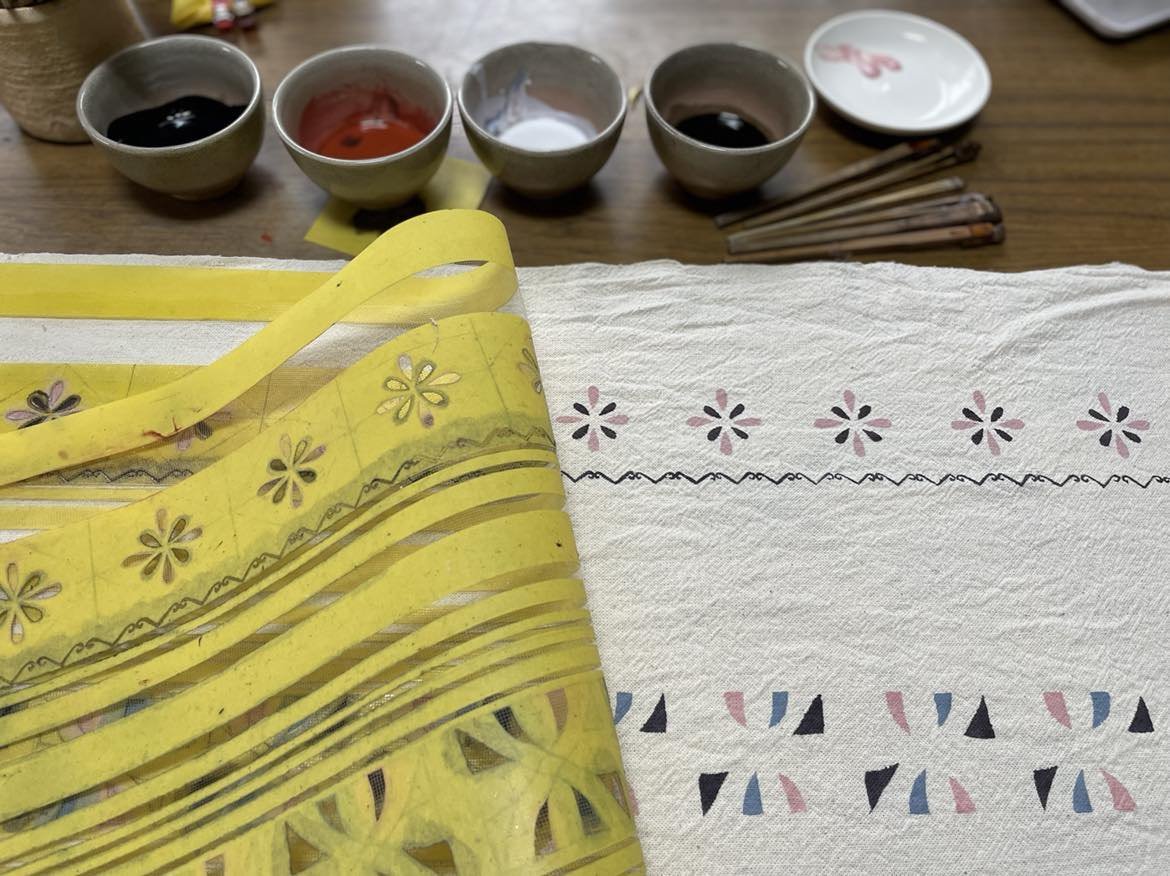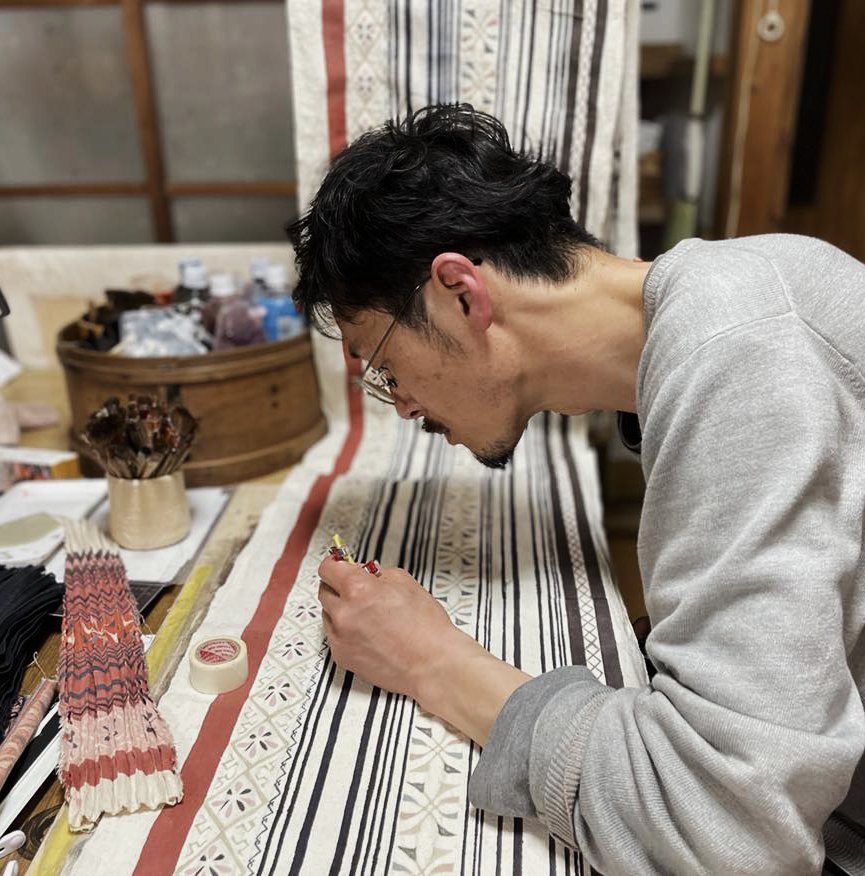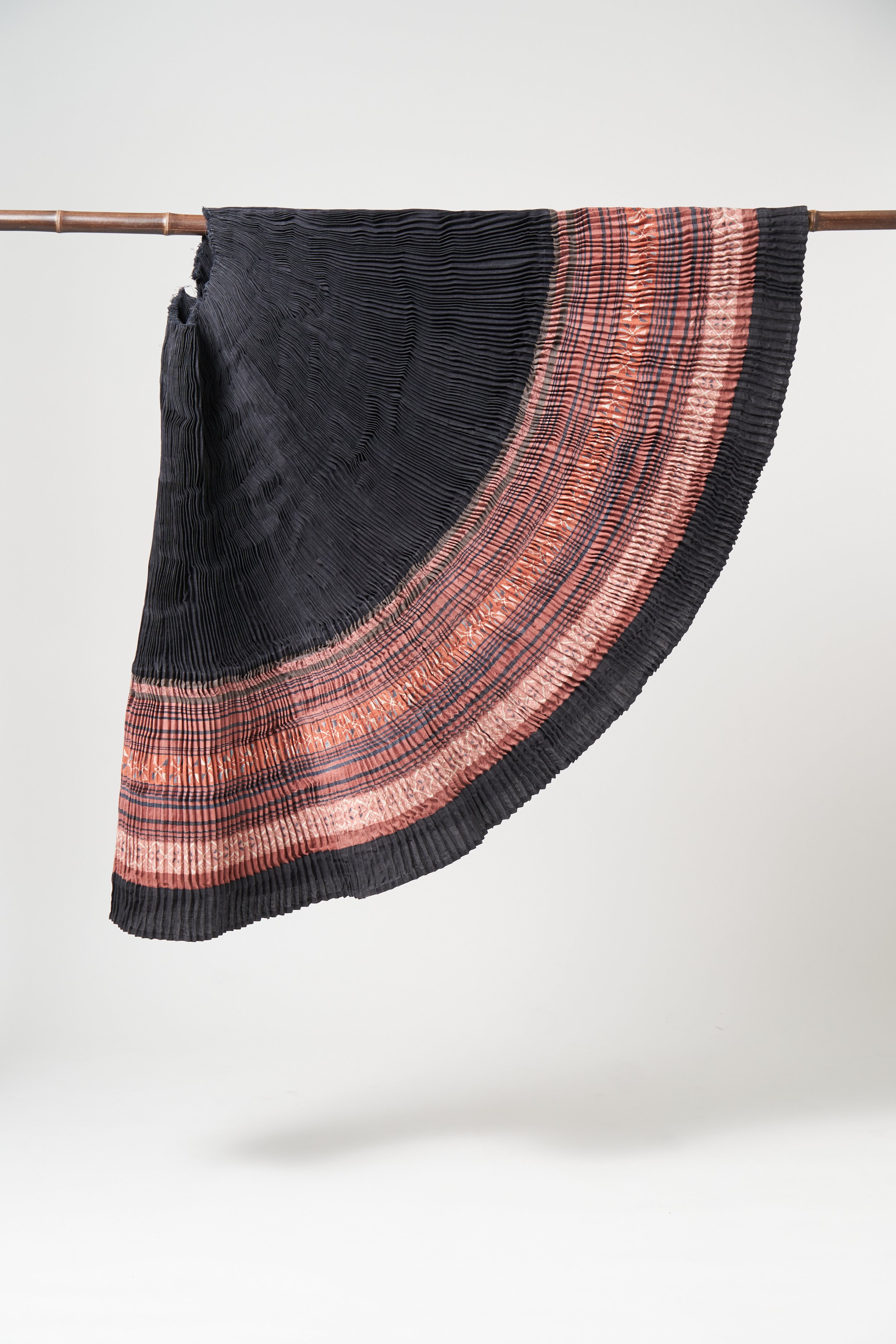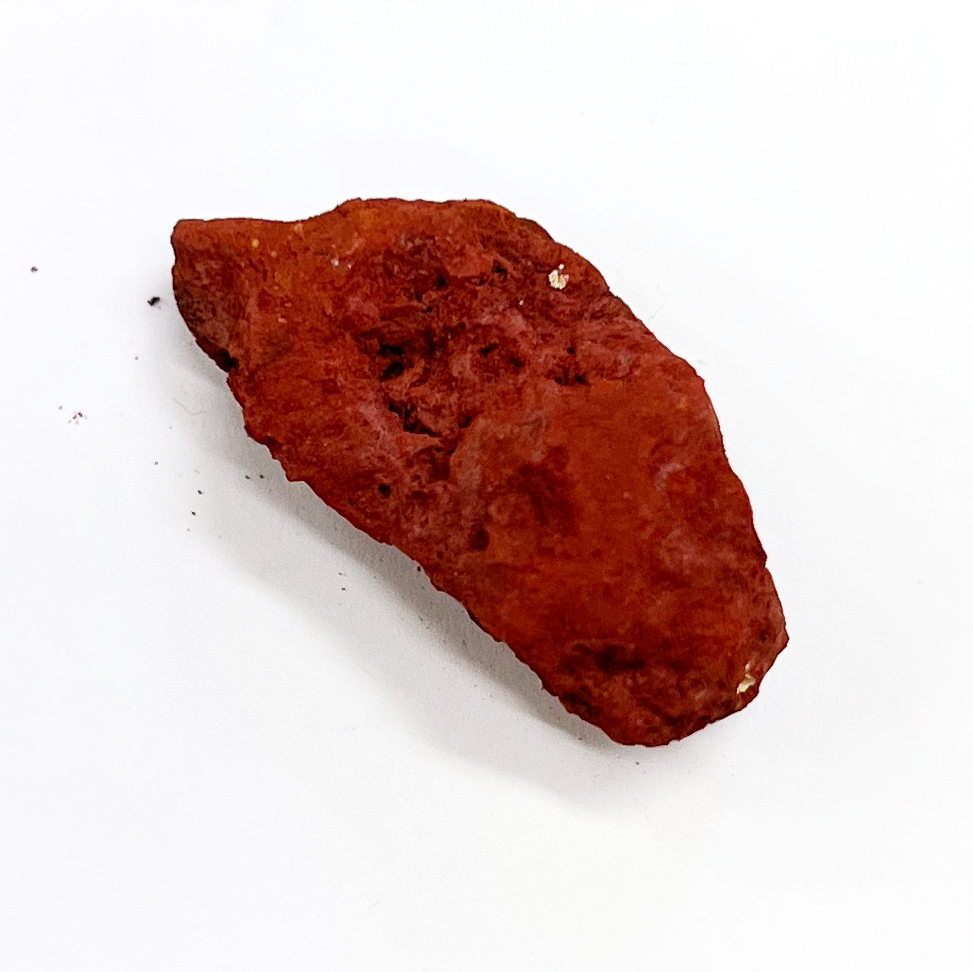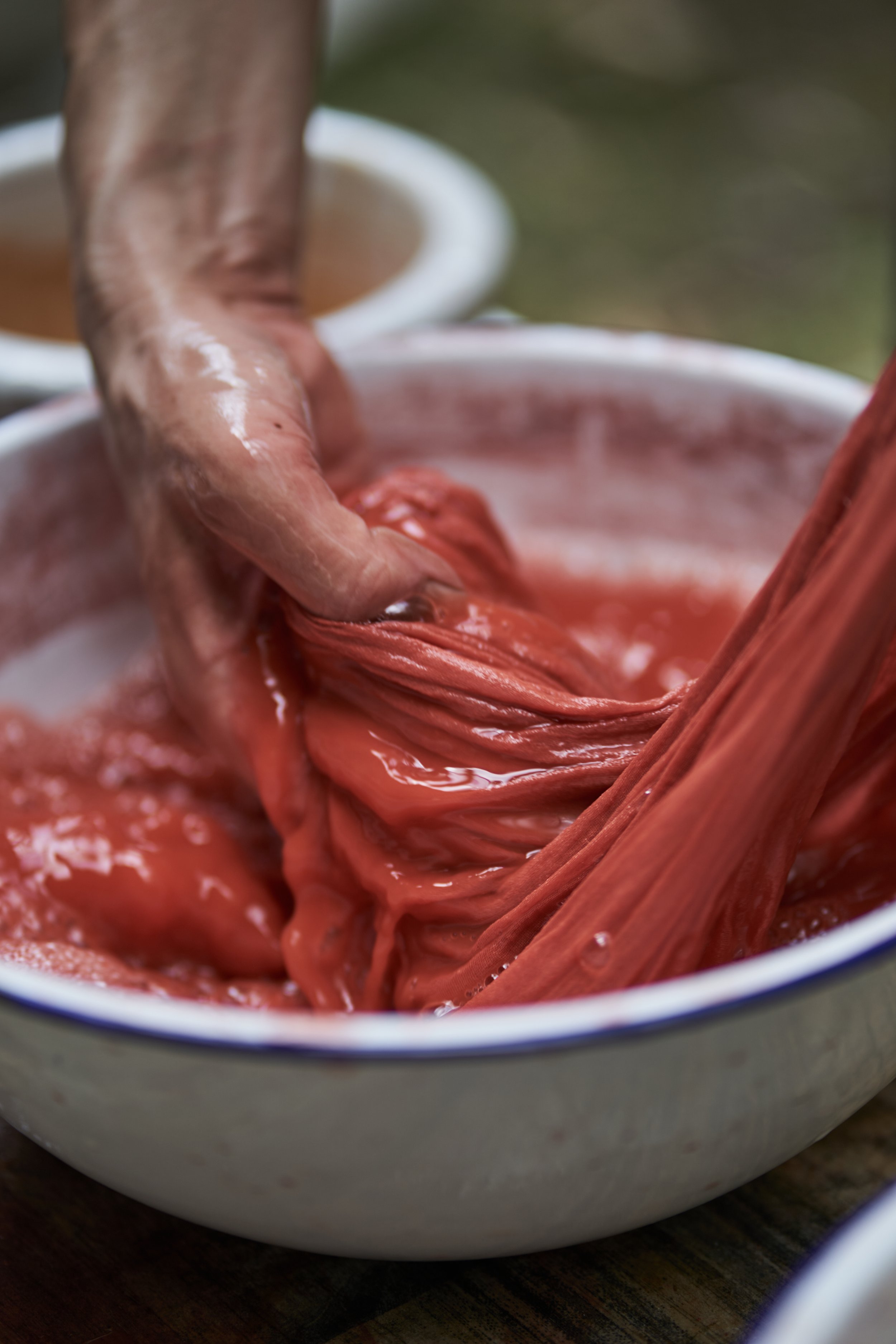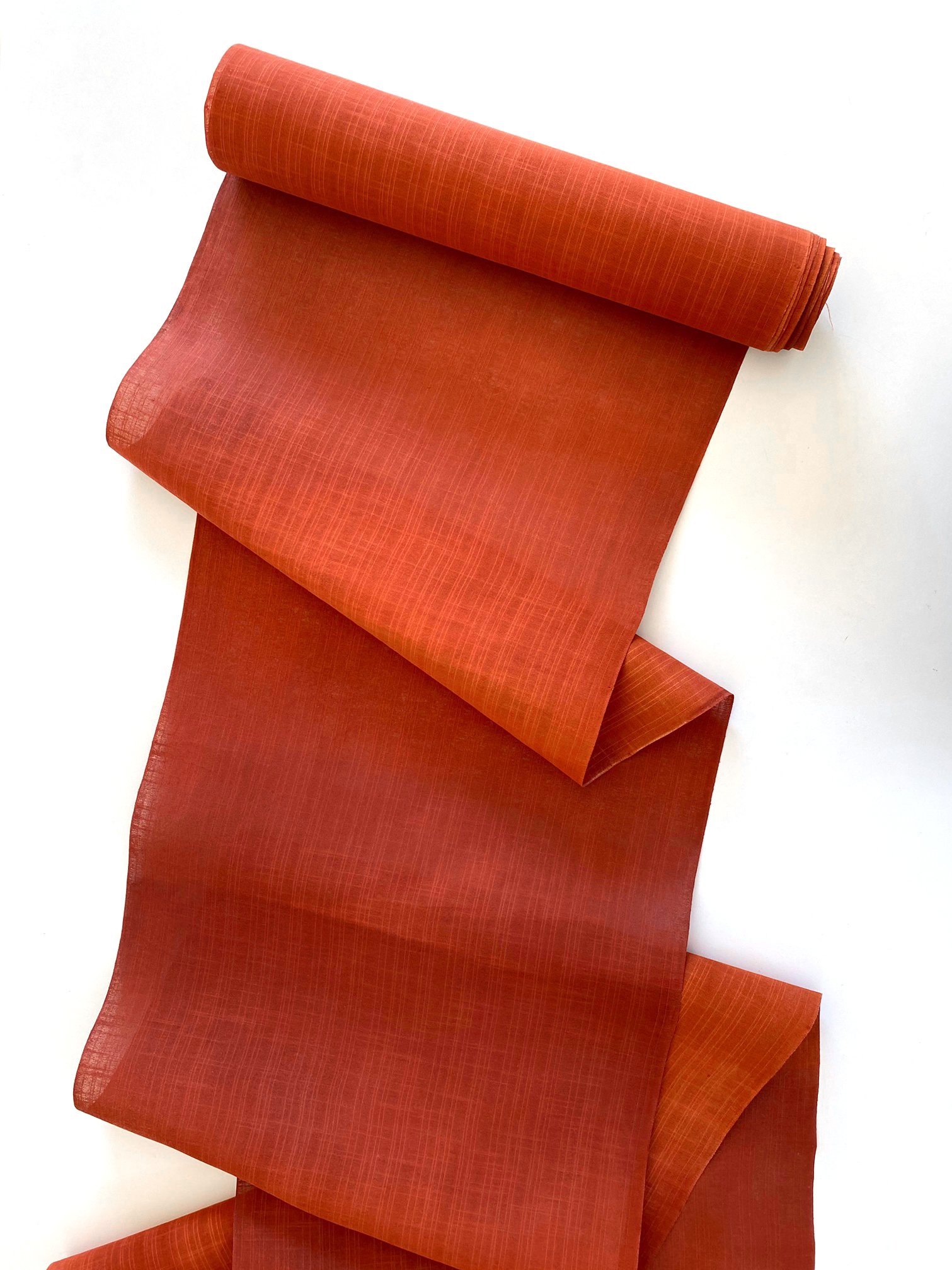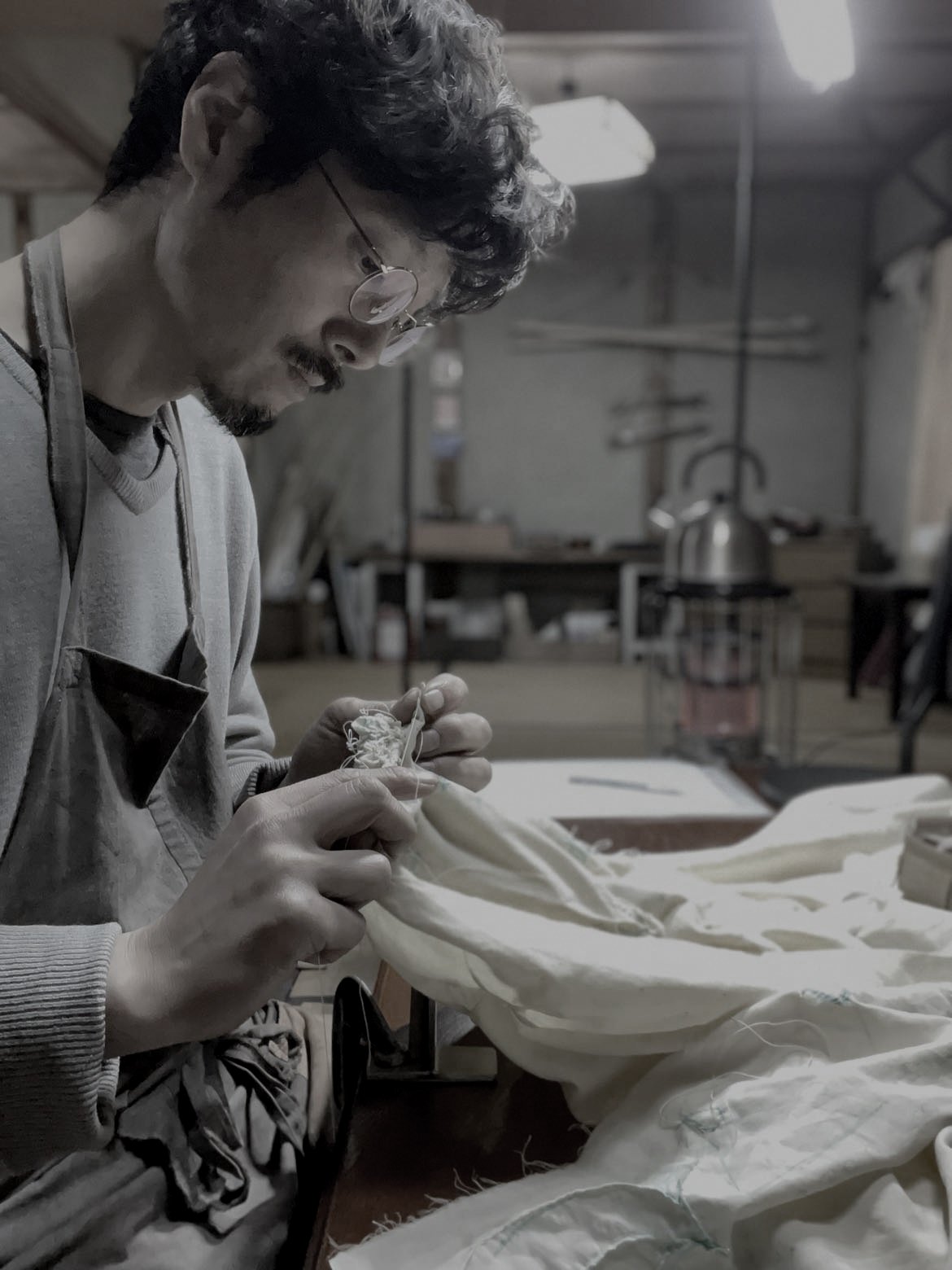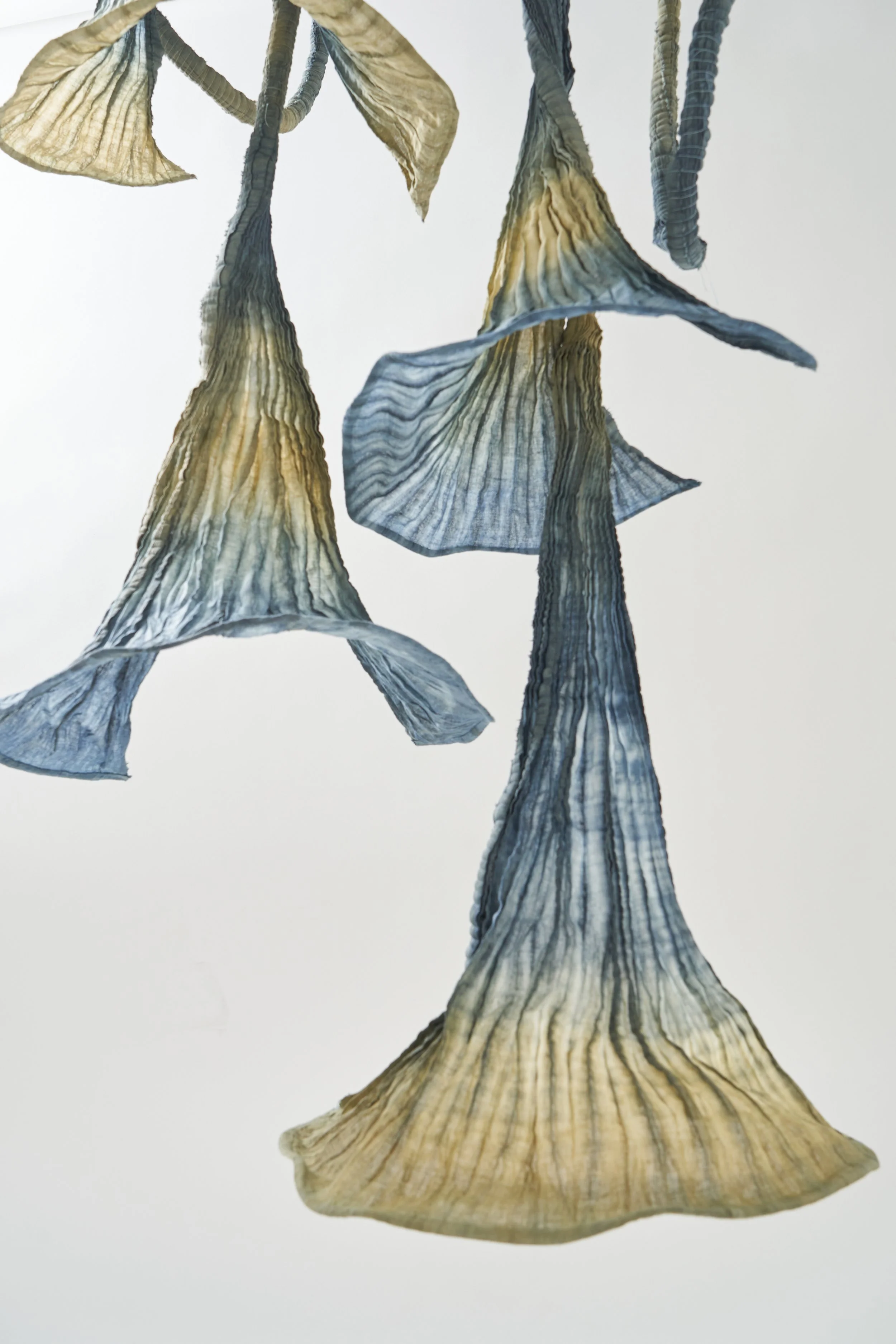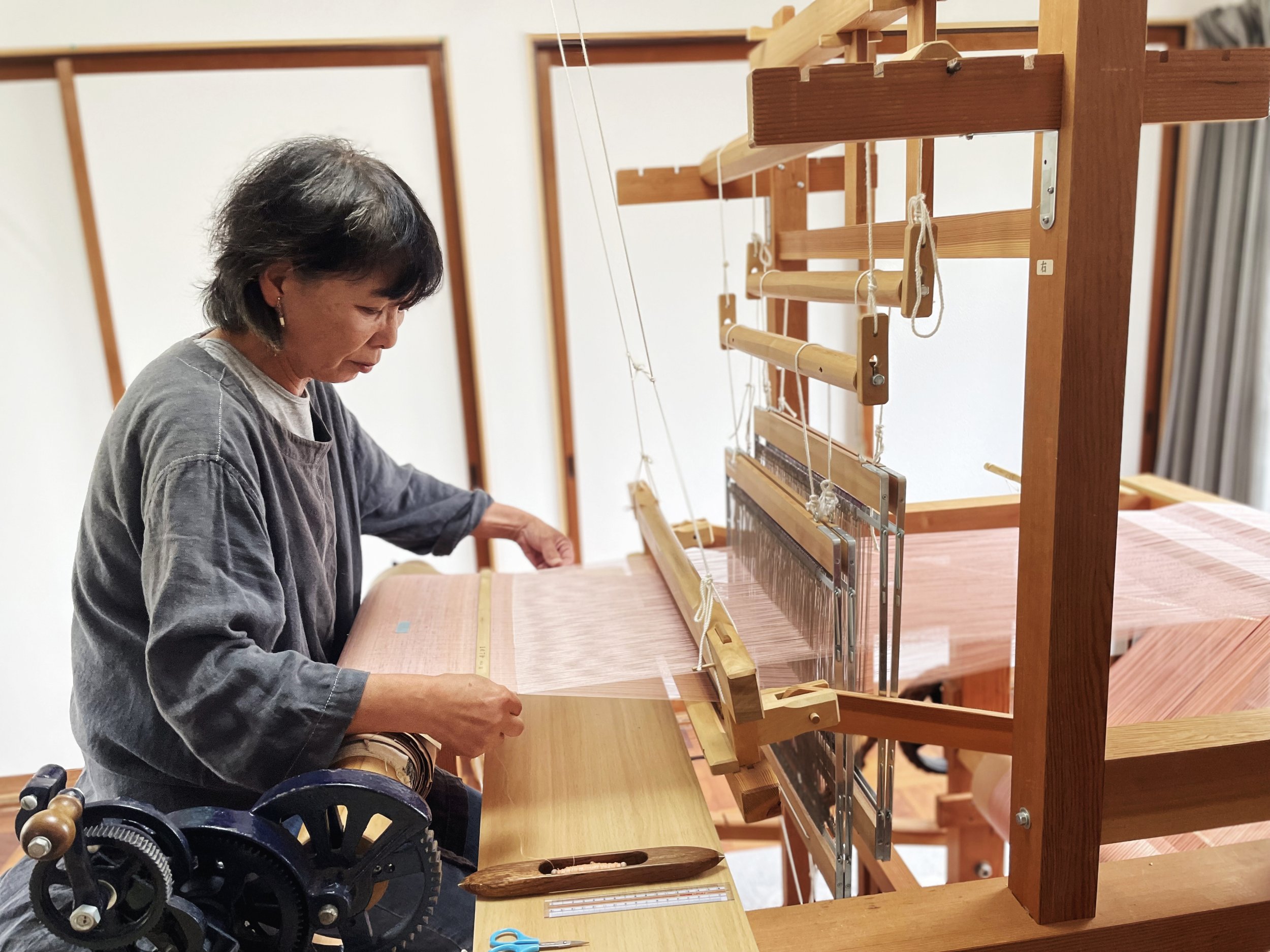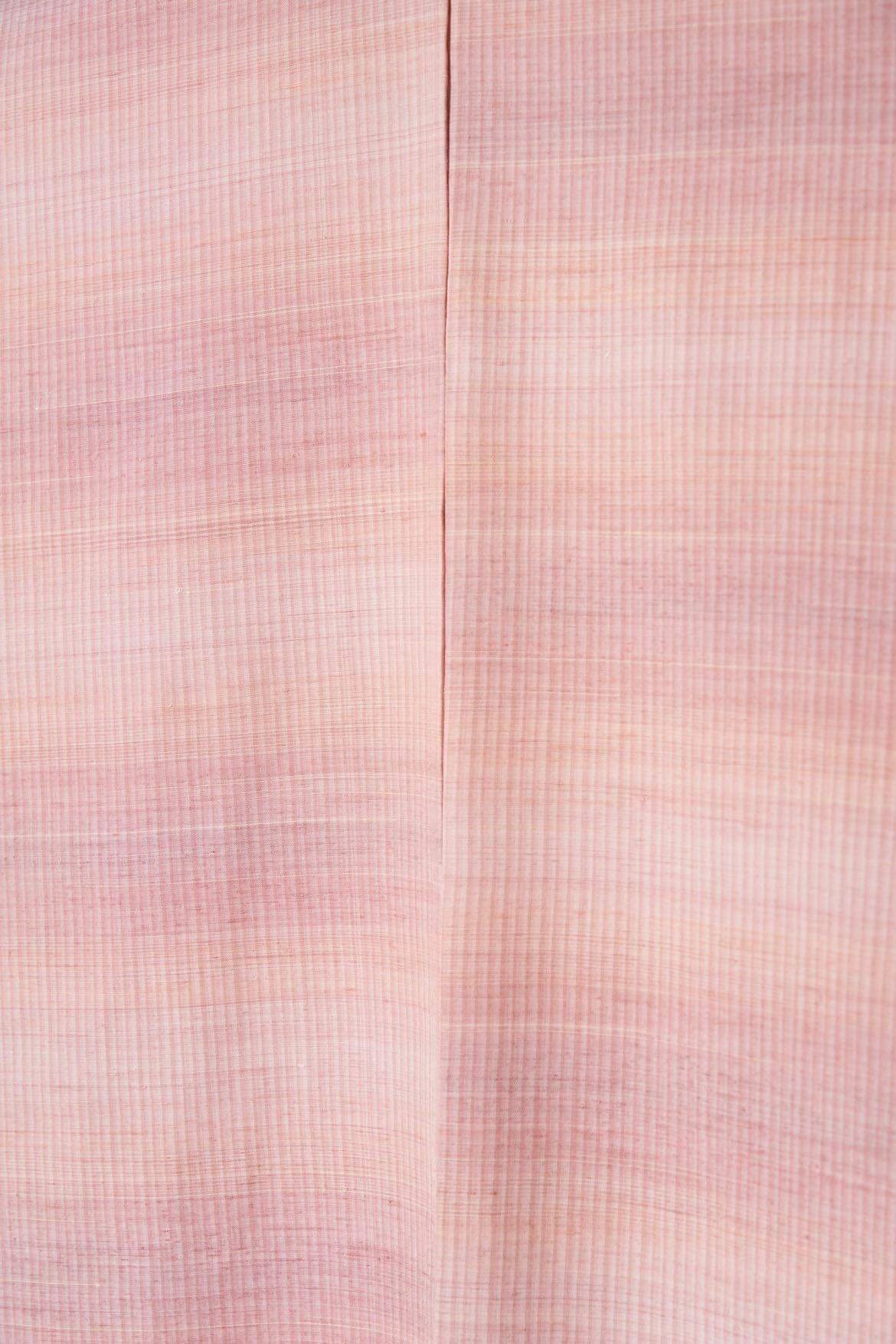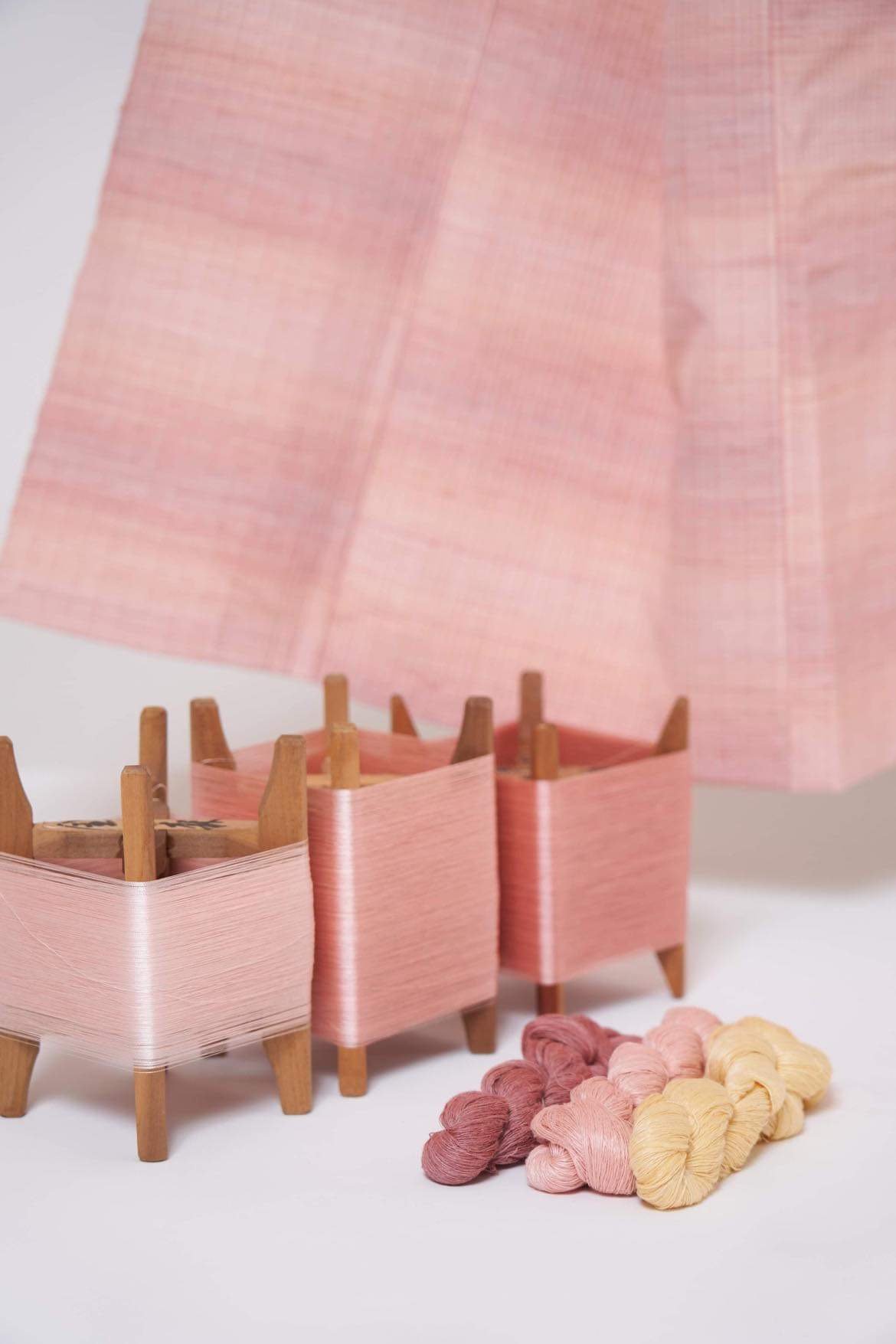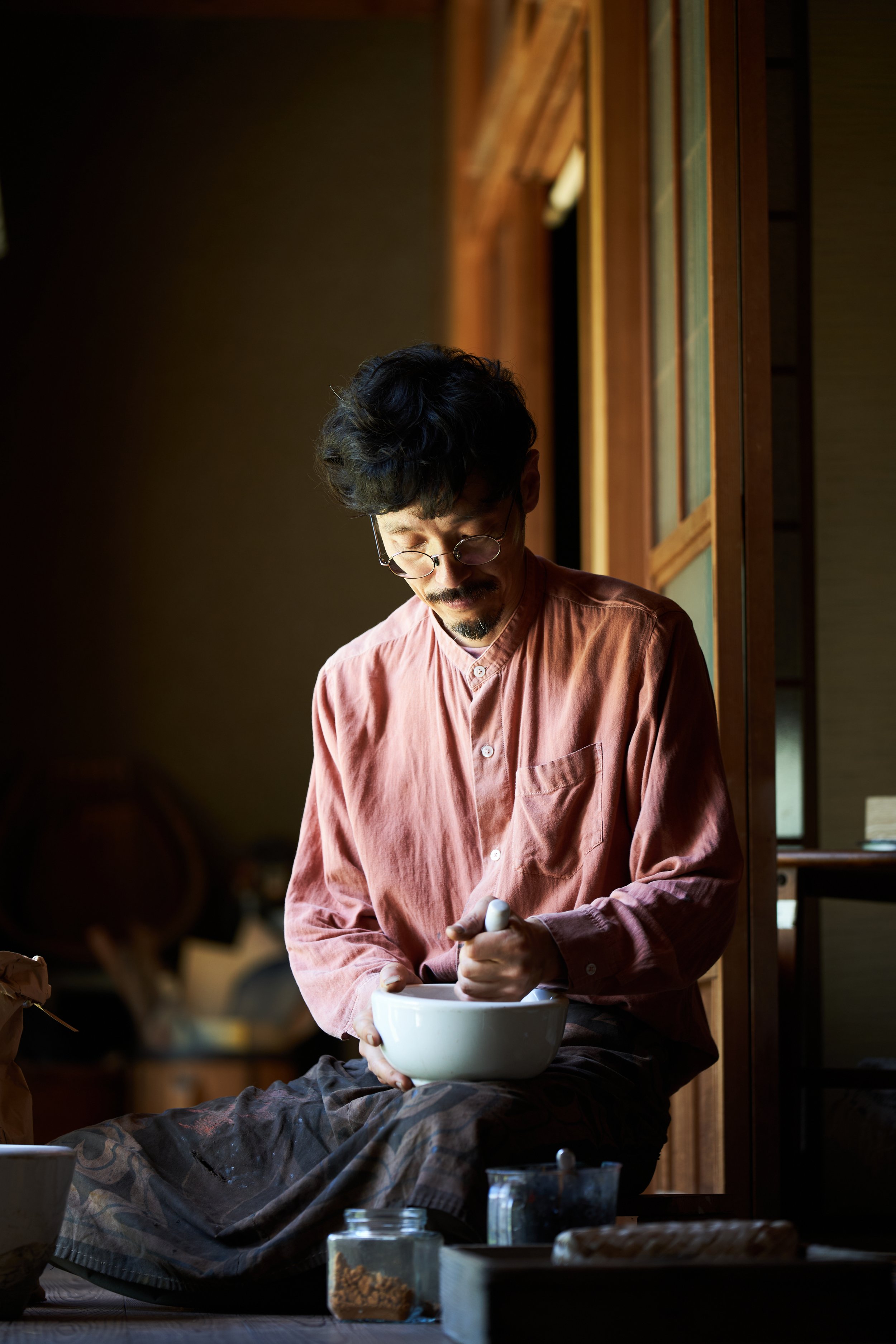An exhibit of textile and Japanese dye
Cloth of Time 「時を刻む布」
by Yutaka Obuchi
September 8 - October 8, 2023
Loop of the Loom - DUMBO (map)
Loop of the Loom invites you to "Cloth of Time" by Yutaka Obuchi, one of the world's few Bengala dyeing artisans and artists from Japan, for a one-month event delving deeply into the connection between ancient dyes, cloth, and humans.
Yutaka Obuchi's "Cloth of Time" chronicles are inspired by the techniques of ancient artisans who discovered the process of extracting vibrant colors from minerals of the earth. Each piece is a testament to meticulous craftsmanship. Obuchi is offering various Bengala dyeing workshops and lectures, bringing the essence of Japanese textile art to New York City.
Message from Loop of the Loom
The following is a translation of Obuchi's descriptions and background of his exhibited artworks. By meticulously recreating ancient methods, the extensive and intricate work involved in creating Bengala pieces becomes evident. Immersed in the seclusion of his remote workshop, he delved into the pursuit of values that have reversed in modern life, leading to discoveries that eventually inspired the creations of his works. All of this was possible because of a fateful encounter with the local soil. Having read his words below will give you a better understanding of his artwork. We hope to see you at the exhibition!
The Cloth of Time
時を刻む布 2023
Material: Linen cloth, Cotton cloth (hand woven by Ranten people in Laos )
Dye: Bengala, Indian indigo, Bamboo charcoal, Egg whites
The inspiration behind this piece was an encounter I had with a woman of Miao descent, an ethnic minority from the province of Guizhou, China. She was wearing a pleated skirt that she had made with many layers and fine folds, which are often worn by young women. These skirts are said to symbolize wealth and prosperity, and are made from combining linen and cotton cloths together.
The hemp cloth in this piece is dyed with indigo and bamboo charcoal numerous times, and the cotton cloth is stencil dyed using Bengala. Both are finished with a coating of egg whites and then left to dry. Then, the cloths are beaten together with a mallet to unite the dye and egg whites with the cloth. Finally, the beaten cloth is wet and pleated by hand, fixed with string, and dried over the course of a few days to create folded pleats that do not collapse.
The dyed stencil patterns in this piece represent wind, water, and grass, among other phenomena of nature. The circular pattern represents the cycle of life, and the red Bengala circle signifies the sun. I hope to express my daily gratitude and appreciation for life in this figuratively timeless piece.
The Miao people spend a tremendous amount of time and effort to create a single woven dress. They pour their heart into their fabrics– weaving in hope, optimism, and their legacy along the way– to wear for the whole world to see.
Red
赤 2020
Material: Cotton, Hemp
Dye: Bengala
Bengala dye, established between 15000 BC and 18500 BC, is a mineral pigment made from iron oxide and is said to be one of the oldest colors in the world. It has been used to color the wall paintings of Lascaux, the caves of Altamira, and clothes of commoners for thousands of years.
In the volcanic archipelago of Japan, Bengala has been used for a variety of materials and techniques. Centuries ago, dyers collected red clay and baked them manually to create Bengala dyes. This traditional process has been passed down for generations and today, Bengala dyes are collected 300 meters underground and then baked at a temperature of 800, 900, and finally 950 degrees Celsius to create 3 levels of red dye.
Red is the color of blood, the sun, and therefore the color of life. The color of the soil remains the same in both ancient and modern times. Thus creating colors from what Earth naturally offers connects humans to the past, the present, and the future.
Series of Shibori Creations: Living Creatures
Shibori zome, or tie-dyeing, may be the most primitive dyeing technique in the world. There are a variety of patterns that can only be made by human hands and threads. The continuum of life can be seen in tie-dyed fabric– each with a unique rhythm, delicacy, and boldness– that cannot be recreated by another.
There are traditional tie-dye techniques in various countries around the world, including India, China, and Indonesia. What sets Japanese shibori dye apart from others is its delicate and beautiful use of colors.
In the Arimatsu Narumi Shibori region in Japan, there are over 100 different types of tie dyeing methods. These techniques created by their craftsmen can range from tornado shibori, arashi (storm) shibori, and to wrapped shibori. One can feel the spirit and history of these Arimatsu craftsmen by viewing their combinations and coordinations of Bengala colors.
In order to bring out dynamic colors and to maintain sculptural shapes in shibori patterns, the shibori dye is fixed with natural pastes such as konjac paste, casein, and egg whites. This allows the color to stay in the placed area and grants creative freedom for dyers to sculpt and shape their patterns.
Akin to Plants
植物のようなもの 2019
Tatsumaki shibori technique
Material: Linen
Dye: Bengala, Indian indigo, Egg whites
Akin to Bark
樹皮のようなもの 2021
Arashi shibori technique
Material: Ramie
Dye: Bengala, Casein, Kakishibu
Akin to Bubbles
泡のようなもの 2019
Makiage shibori technique
Material: Silk
Dye: Bengala, Volcanic ash, Japanese konjac paste
Akin to Water
水のようなもの 2023
Suji shibori techunique
Material: Shike-silk
Dye: Bengala, Japanese konjac paste
The Fluttering Cloth of Ama, Woman of the Sea
海女の比礼(ひれ)2021
Material: Silk
Dye: Bengala, Cochineal
This fabric was produced as a stage prop for the play “Ama”, which was performed in Tokyo by expression artist and performer Emi Nakae in 2021.
The Bengala ochre dye used in this piece was collected 300 meters underground and then baked at 900, 950, and 1000 degrees Celsius to create vermillion red, pure red, and purple red colors, respectively. By baking the Bengala at different stages, its color and saturation begin to change, creating a beautiful gradation of hues. Finally, cochineal was used throughout the piece to add a pale pink color as the last touch.
“Hire” is an ancient Japanese name for cloth that flutters in the wind. There are many ancient Japanese myths where a celestial maiden dressed in this “Hire” cloth descends from heaven, such as the “Orihime” and “Hagoromo” legends. The fluttering motion is important in the mythology as it is said to ward off evil spirits and negative energy.
While cloth is used widely today to protect the human body and to support life, it is also a medium that connects Japanese people to their gods and traditional culture.
The Presence of Soil
土の気配 2023
Collaborated with textile artist Masako Katano
Material: Silk
Dye: Bengala
Bengala dye is often used to dye thick fabrics such as banners and Noren curtains. This may be the first attempt in the world to weave a kimono with Bengala dyed materials. Since Bengala dye is a pigment, it is said that the color may rub off from the threads during the weaving process which is why many have avoided its use.
In this piece, we valued the essence of soil. Instead of dyeing clear patterns and eccentric expressions, the colors of the soil overlap and mix to create a gradation of hues similar to a scenic sunset.
Bengala is used in three colors for the warp and eight colors for the weft.
“Hatagoshirae” is the process of dyeing, glue pasting, thread winding, reed threading, warp thread winding, and finally reed threading which is done over the course of one month. After this is all set up, the actual weaving process of the kimono fabric takes over three months to complete.
By leaving the lighter colors in their purest and brightest form, the contrast with the deeper Bengala tones is strengthened. With this light silk that is unique to the color of the clay, I hope to express the grace, femininity, and gentleness of Japanese kimonos.
This kimono is the first collaborative piece by both artists. Concepts and inspirations for new projects have already begun. We hope you stay tuned for what is to come.
The Story Behind My Soil
The most artworks in this exhibition used Katano Bengala, the soil found underground in the city of Katano in suburb of Osaka.
This soil is obtained from the waterworks bureau called the “Hoshi no Sato” Water Treatment Plant. It is the soil that is mixed together when water is pumped up from a deep stratum around 300 meters underground.
Nurtured for tens of thousands of years in the depths of the earth, this soil becomes a beautiful color after being fired. When initially collected this soil is a black-brown color, but when it is dried and comes in contact with oxygen, the soil is reborn as an ochre color. This natural process of red iron oxide creates the dye known as Bengala.
Outside of the dyeing community however, this soil is treated as sludge, and over 150 tons are dumped into the ocean around Osaka every year. Additionally, the bacteria living in this soil is what makes the water at the plant clean and drinkable, supporting thousands of lives every day. While this soil may be seen as “sludge” to many, I would like people to know that it can be regenerated to use as beautiful Bengala colors as well.
Combusting the Katano soil at 700, 800, 900, 950, 1000, 1050, and 1100 degrees Celsius (about 1300°F to 2000°F) produces a beautiful range of colors to be used as Bengala dye, shown in this exhibition today.
About the artist
Yutaka Obuchi is a Bengala dye artisan and artist based in Osaka, Japan. Born in 1978 in Gunma Prefecture, he moved to Osaka at the age of 27 where he first discovered Bengala Mud dye. There, he encountered Bengala master Tomehiko Nakajima and worked as an apprentice at the only Bengala manufacturer in Japan, Kosyokunobi. Obuchi has been working as a Bengala craftsman for the past 14 years and has explored new creative opportunities using this natural dyeing method. He has been working oversees the product planning, development, and design of the Kosyokunobi.
Alongside his profession as a Bengala craftsman, Obuchi is also devoted as a textile artist specializing in Bengala and pigmented dye. His artworks are created by primitive dyeing methods using a pestle and mortar, grinding pigments day by day to find vibrant earth colors from the soil. He has dyed kimonos, obi fabrics and noren screens with Japanese traditional dyeing techniques such as shibori. Obuchi has also exhibited his sculptural installations and stage productions around the world. He is not only conveying the culture of Japanese colors and dyeing but also pursuing new possibilities and expressions of Bengala dye.
Past exhibitions and workshops
2015 Tsuchi to Some no Teshigoto (Clay & Dyeing Handicrafts Exhibition), Tokyo
2016 Bengala Yukata Exhibit, Kobe
2017 Fu-Sui-Do no Shitsurai (Living with Wind-Water-Soil Exhibition), Osaka
2018 Arimatsu International Shibori Conference, Aichi
2019 Fu-Sui-Do no Shitsurai (Living with Wind-Water-Soil Exhibition), Osaka
2019 Exhibition Simple Pleasure, Taiwan
2019 Japanese Textile & Craft Festival, London
2020 Japanese Textile & Craft Festival, London
2021 Tsuchi no Asobi, Iro no Katachi (Playful Forms of Soil and Colors), Tokyo




